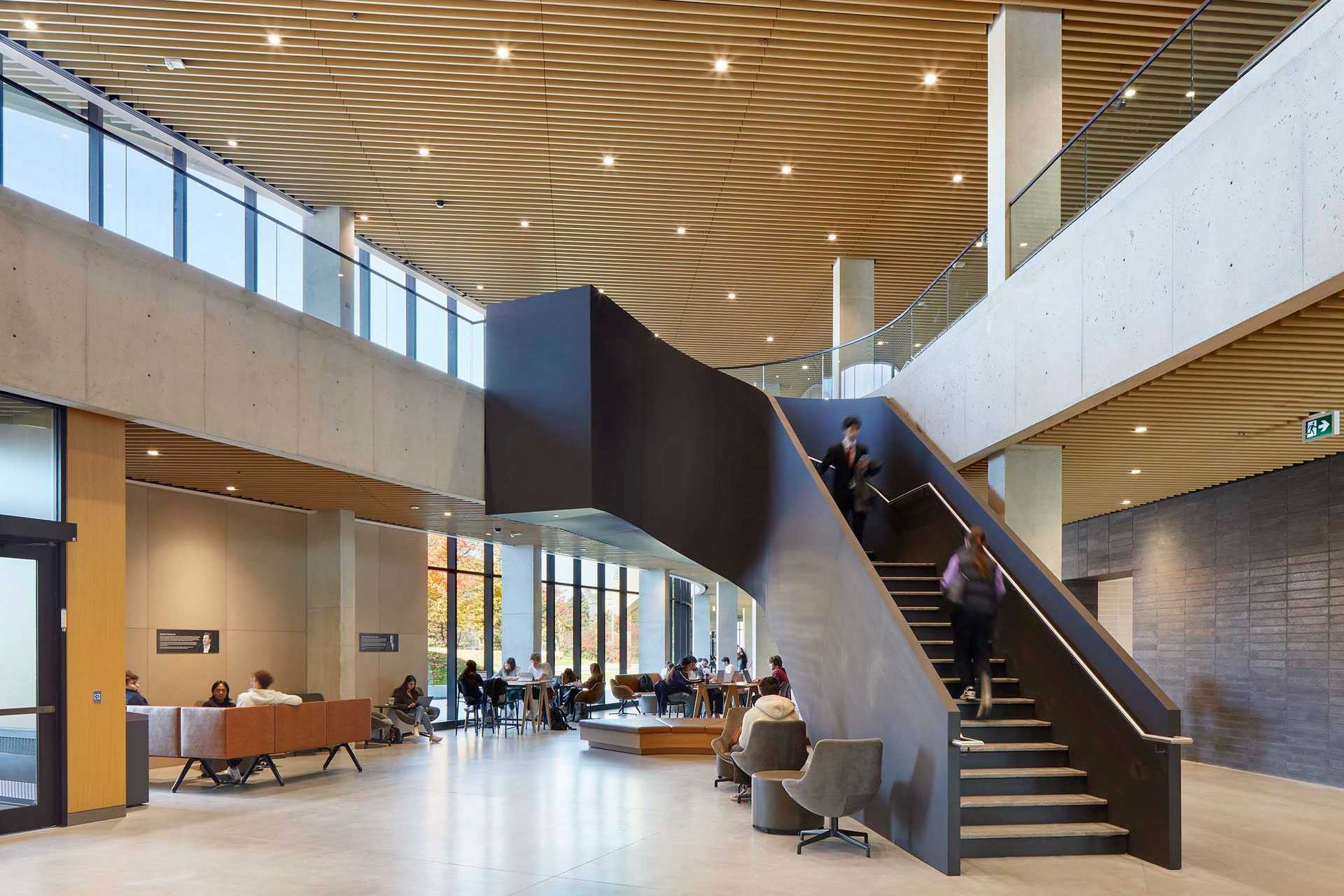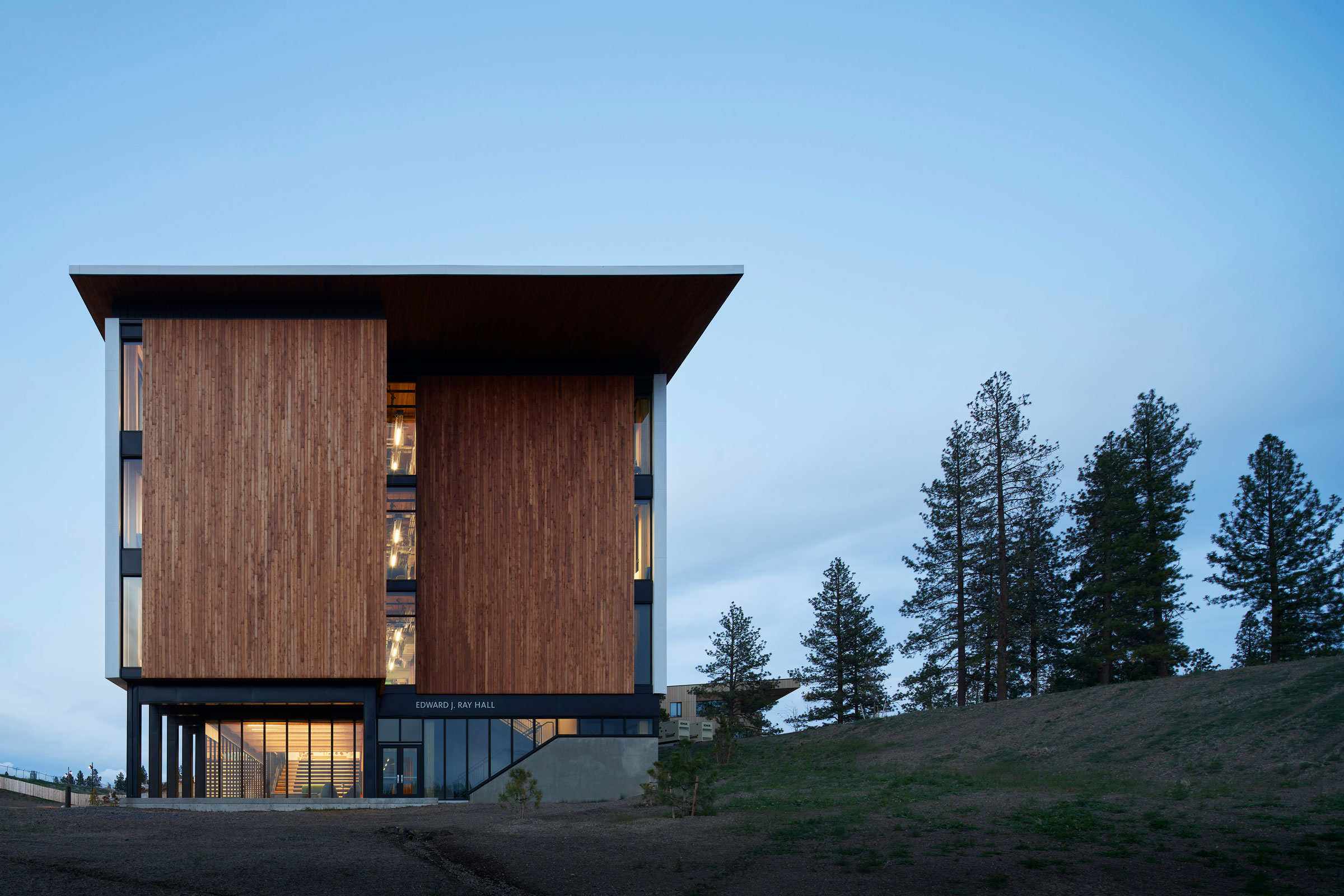Story at a glance:
- Perkins&Will designed the Ronald D. Schmeichel Building for Entrepreneurship and Innovation at Western University to be net zero–ready.
- The project aimed to foster entrepreneurship and innovation, create a flexible event and conferencing hub, and deliver sustainability without compromise.
It’s no secret that universities today face an abundance of challenges, operating within tight budgets and finite land resources. Yet these constraints are prompting architectural teams to deliver even more flexible and resilient design solutions. Today’s campus buildings must serve multiple roles and maximize efficiency, all the while encouraging interdisciplinary collaboration in order to earn their right to be built.
One such example is the new Ronald D. Schmeichel Building for Entrepreneurship and Innovation at Western University, which had three main design goals upon inception: foster entrepreneurship and innovation, create a flexible event and conferencing hub, and deliver sustainability without compromise.
Designed by Perkins&Will’s Toronto studio, the building has undoubtedly met these goals, being Western’s first net zero–ready facility and home to one of Canada’s largest maker spaces, offering an ambitious pairing of sustainability and tradition that signals a new era for campus architecture.
While the building now serves as a hybrid hub where learning, entrepreneurship, and engagement converge, the original site posed significant challenges for the design team. Located along Western Road—an arterial street historically shielded from campus life—the building was hemmed in by existing infrastructure, including service areas for the adjacent D.B. Weldon Library, originally designed by John Andrews in 1967 and recently revitalized by Perkins&Will. Add to this difficult grade conditions and the preservation of mature trees, and the design required ingenuity and restraint.
The solution is a boomerang-shaped plan with two wings converging at a central two-story lobby. This configuration creates three principal entries and a naturalized forecourt sheltered from wind and traffic. The result is not just a building but a new point of convergence—linking students, entrepreneurs, and visitors while strengthening Western’s western campus edge.
A Dialogue with History
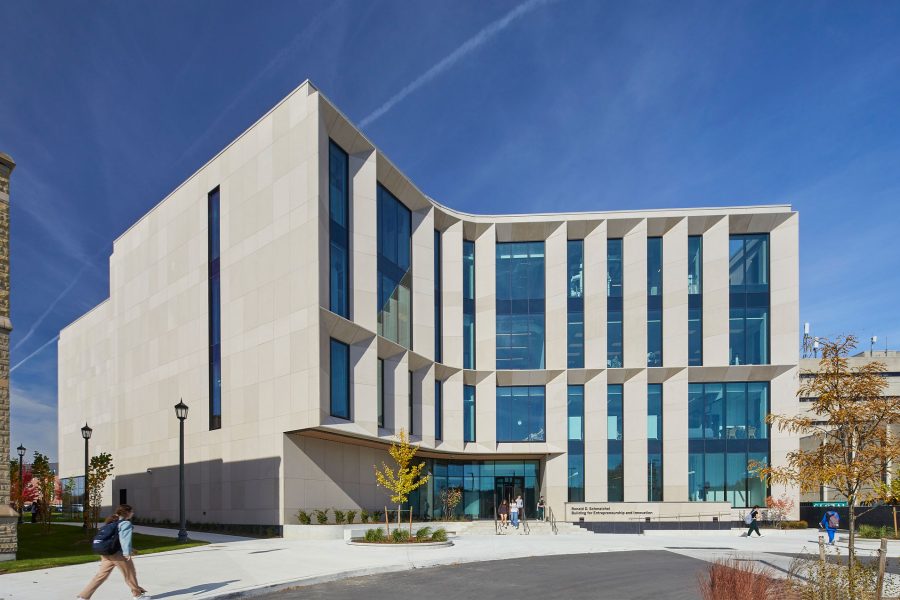
Photo by Lisa Logan, courtesy of Perkins&Will
Western’s campus is renowned for its Collegiate Gothic buildings from the 1930s and 1940s, complemented by later Brutalist landmarks. This architectural inheritance creates both opportunity and constraint; new buildings are expected to address their historic context without succumbing to pastiche.
The Schmeichel Building responds with a high-performance facade that acknowledges its neighbors while charting its own course. Its articulation adapts to each surrounding condition, creating a dynamic exterior that balances innovation with deference to tradition. In this way the building signals a new identity along Western Road without compromising the university’s character.
Inside the Hub
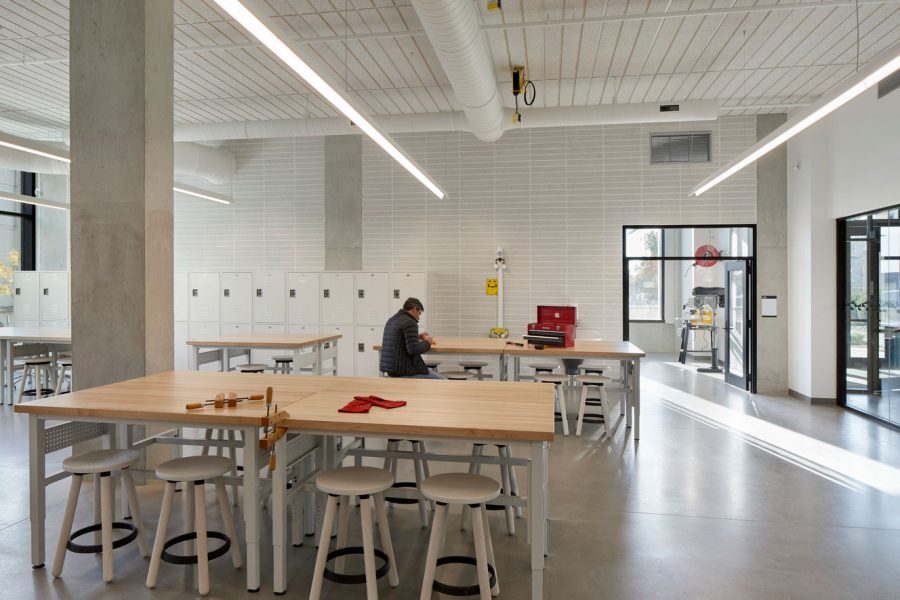
Photo by Tom Arban, courtesy of Perkins&Will
Internally the 100,000-square-foot facility integrates a state-of-the-art maker space, the Morrissette Institute for Entrepreneurship, flexible classrooms, breakout rooms, a café, and conferencing facilities. Every element is designed to encourage collaboration and adaptability. Configurable seating, technology-enabled rooms, and informal gathering spaces ensure the building evolves with the needs of its users.
At its core is an atrium—a two-story gathering space that acts as both circulation spine and community hub. It is here that the building’s dual functions—entrepreneurship and conferencing—meet seamlessly, reinforcing the ethos of convergence and cross-pollination.
A Model for Sustainable Design
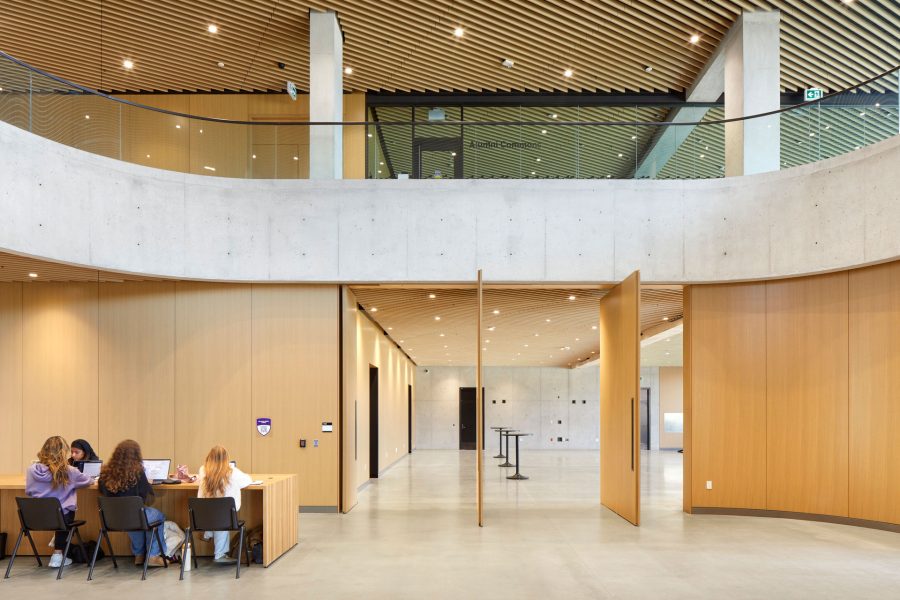
Photo by Tom Arban, courtesy of Perkins&Will
Western University, a publicly funded research institution in London, Ontario, has set ambitious decarbonization targets, and the Schmeichel Building is a cornerstone of that effort. The project is targeting both Net Zero Carbon and LEED Gold certification, placing it at the forefront of energy-efficient campus design.
As Western’s first net zero–ready building, the Schmeichel Building is defined as much by its sustainability strategy as by its architectural presence. At the foundation of this approach is a high-performance envelope, with triple-glazed windows and insulation, ensuring that heating and cooling demands are minimized from the outset. All systems are electrified, supported by renewable energy through a planned rooftop photovoltaic array and an extensive geothermal field beneath the site. Together these measures eliminate reliance on fossil fuels and allow the building to balance annual heating losses with gains through integrated mechanical and electrical systems.
These environmental considerations also extend into the landscape. Rather than defaulting to a sod monoculture, the design preserves existing mature trees while introducing drought-resistant native plantings, stormwater gardens, and a carefully planned bioswale. These features reduce runoff, improve biodiversity, and create a more resilient campus ecology. Hardscaping is deliberately minimized and only used where it supports accessibility and gathering, reinforcing the building’s role as a community hub.
Taken together these strategies make sustainability inseparable from the building’s identity. They demonstrate that environmental performance need not come at the expense of tradition or program but can instead be integrated into every layer of design—from facade to landscape—setting a new standard for Western’s ambitious Open Space strategy and the more than 300 capital projects planned across campus.
The Future of Higher-Ed
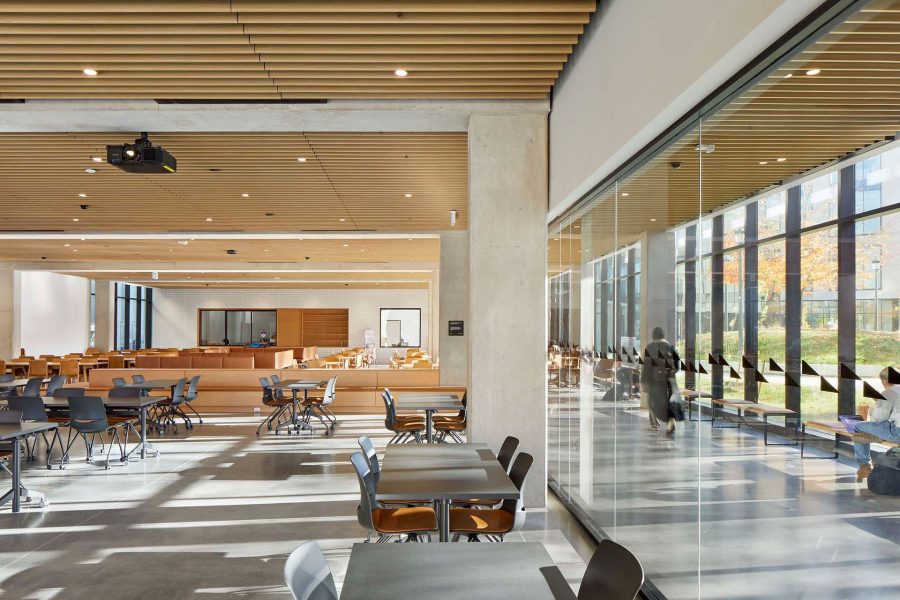
Photo by Tom Arban, courtesy of Perkins&Will
The Ronald D. Schmeichel Building is more than an academic facility. It is a statement—that sustainability and tradition can coexist; that interdisciplinary collaboration is not a luxury but a necessity; and that universities, even in times of financial constraint, can lead in shaping a resilient, forward-looking built environment.
By bringing Western’s entrepreneurship programs under one roof, the building catalyzes innovation while embodying responsible stewardship of resources. In doing so, it offers a model for North American higher-ed institutions navigating growth, heritage, and sustainability all at once.

